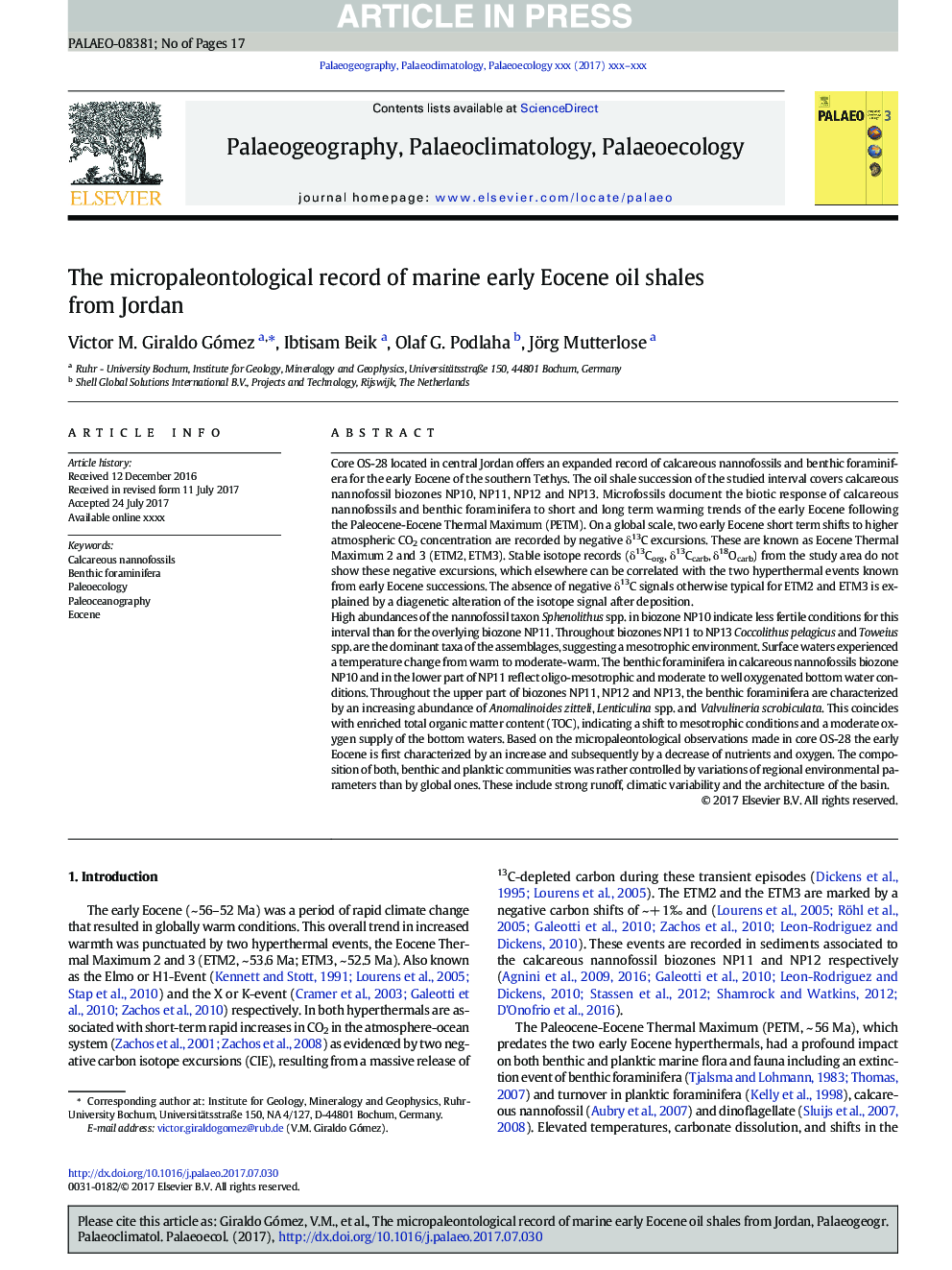| Article ID | Journal | Published Year | Pages | File Type |
|---|---|---|---|---|
| 8868717 | Palaeogeography, Palaeoclimatology, Palaeoecology | 2017 | 17 Pages |
Abstract
High abundances of the nannofossil taxon Sphenolithus spp. in biozone NP10 indicate less fertile conditions for this interval than for the overlying biozone NP11. Throughout biozones NP11 to NP13 Coccolithus pelagicus and Toweius spp. are the dominant taxa of the assemblages, suggesting a mesotrophic environment. Surface waters experienced a temperature change from warm to moderate-warm. The benthic foraminifera in calcareous nannofossils biozone NP10 and in the lower part of NP11 reflect oligo-mesotrophic and moderate to well oxygenated bottom water conditions. Throughout the upper part of biozones NP11, NP12 and NP13, the benthic foraminifera are characterized by an increasing abundance of Anomalinoides zitteli, Lenticulina spp. and Valvulineria scrobiculata. This coincides with enriched total organic matter content (TOC), indicating a shift to mesotrophic conditions and a moderate oxygen supply of the bottom waters. Based on the micropaleontological observations made in core OS-28 the early Eocene is first characterized by an increase and subsequently by a decrease of nutrients and oxygen. The composition of both, benthic and planktic communities was rather controlled by variations of regional environmental parameters than by global ones. These include strong runoff, climatic variability and the architecture of the basin.
Related Topics
Physical Sciences and Engineering
Earth and Planetary Sciences
Earth-Surface Processes
Authors
Victor M. Giraldo Gómez, Ibtisam Beik, Olaf G. Podlaha, Jörg Mutterlose,
